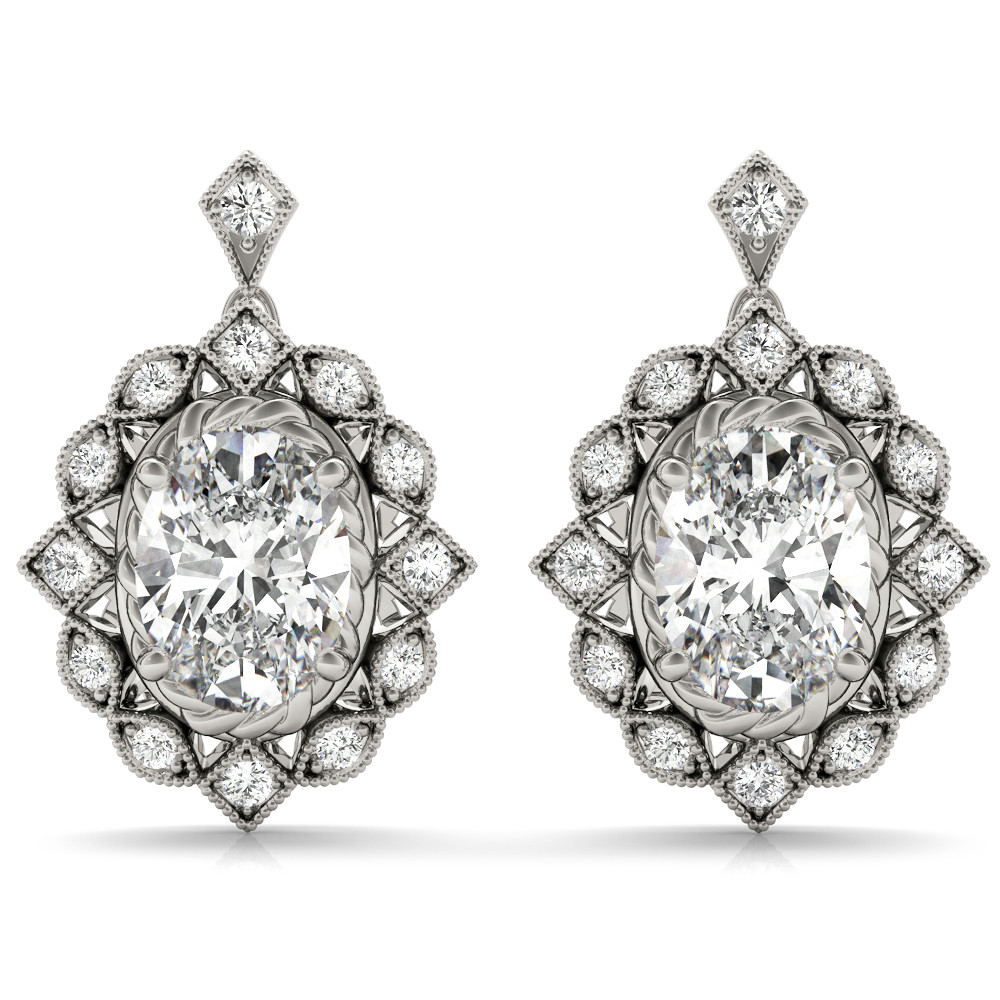“Real” and “Fake” are two terms that really bug me when used in the context of precious jewellery. When I hear a self appointed designer who promotes ethical fashion sell “real” pearls or diss lab created stones are “fakes” on Instagram reels, I feel like throwing my phone right at them. Every tangible piece of jewellery is real. The only way something becomes a fake is if you mislabel it as something else. Lab created diamonds can be more sustainable than their natural counterparts and they rightly belong in ethical fashion.

What are Lab Created Diamonds?
Unlike naturally formed diamonds, Lab-Created Diamonds are created and cut in a laboratory. The 4 c’s of diamonds are applicable to them as well. They have a lot of physical and chemical attributes similar to those found on Earth. However, they are made from chemical vapor deposition. The most common process is the HPHT or high-pressure, high-temperature process. High-quality and lustrous lab created diamonds were first introduced into the world in the 1950s. Initially they were only used for industrial process. However, due to the evolution of technology, you get highly lustrous stones for jewellery at the present. Apart from clear stones, you can also get yellow, blue, or pink tints.
What is the HPHT Way of Making Diamonds?
High pressures may mimic and replicate the environment on the Earth’s underground. Seeds are used, which are tiny diamonds instead of carbon. The lab diamonds in Calgary are then constantly exposed to pressure and heat, and the technique can successfully recreate everything in just a matter of weeks. This is a far cry from the natural ones that take around a billion years before they can develop and form.
Belt, cubic presses, and split beer are often the manufacturing techniques employed in these man-made gems. Pressure is often around 1.5 million pounds per square inch, and 2,000 degree-Fahrenheit is used. Cooling is where the formation takes place. It’s worth noting that the colour is somewhat near to a yellowish one because of the seeds’ exposure to nitrogen in the air.
About the CVD Method
Newer advances in these technologies gave way to the Chemical Vapor Deposition where hydrocarbon gas mixtures are common. It’s also common in interstellar gas clouds where many scientists have discovered to use less energy than HPHT, as well as a cost-effective way of making lab-grown gems. See more about CVD here.
Small slices of diamonds are heated to reach a certain temperature, and they are placed in sealed containers. Methane is then added as well as other gasses that contain carbon, and with the help of lasers and microwaves, plasma is created. This, in turn, will excite the gas in the chamber, and the seed can grow layer by layer until it can be cut into the right size.
Natural Vs Lab created Diamonds
Man-made diamonds are radiant and durable. They also have the same vibrations and spiritual energy as the natural stone. Therefore, it is difficult to differentiate between the two on sight or touch. Much like the natural stones, the lab created diamonds will have inclusions as well. These metallic inclusions are used to determine if the stones are man-made. Natural gems have a tiny amount of nitrogen embedded in them, while the man-made types have none. Grading reports often let the buyers identify whether they are buying lab-grown ones. Blue hues and tints are also common with these gems because they are exposed to boron. While lab-grown ones have the same electrical and thermal conductivity as their mined counterparts, they are not magnetic.

What are the Advantages of Lab Created Diamonds
- Cost-Effective Alternative
Man-made diamonds tend to be 40% less expensive than the traditional diamonds. Therefore there are great options for fads, quirky designs and styles in trend. Also, it frees up money to spend on travel, insurance, a dream home, and so on. Also, because it is cheaper, you can buy it more often. Buying diamond jewellery can become more fun and not a savings draining experience.
When you exchange your old diamond jewellery, most jewellers will look at the gold content of the piece that you have and remove the diamonds. While natural diamonds (1ct and above) may bring you a good price, smaller diamonds do not really sell well. When you are buying jewellery set with tiny diamonds (melee), it doesn’t matter from the resale perspective whether you are buying natural or synthetic.
- Become More Socially Responsible
With lab stones, you know exactly where these gems were made. No blood is spilt on them, they are not from conflict ridden zones, do not violate human rights and they don’t fuel territorial wars. Giving more value to the lab-created ones will show your loved ones that you care. At least you’re wearing something that is not funding the armed conflicts in various parts of the world, and they tend to be “cleaner.”
- Earth friendly
Mining operations can take their toll on Mother Earth, and they can destroy a lot of forests and wildlife in a short amount of time. Dirt is sifted to find just a single carat, and it’s more than 170,000 pounds in some cases. Many companies might have put up ads and pushed the belief that these gems are rare and they are worth the investment, many people are now aware that this isn’t the case at all.
The Fine Print
Man-made diamonds are not fake. Do not confuse them with natural or synthetic diamond stimulants such as Zircon, Cubic Zirconia, or glass. All said and done, always ask for details of all materials used in jewellery before you buy it. Insist on certification for any stone or metal that is marketed as being precious.
I hope you found it interesting
Cheers



What do you think?